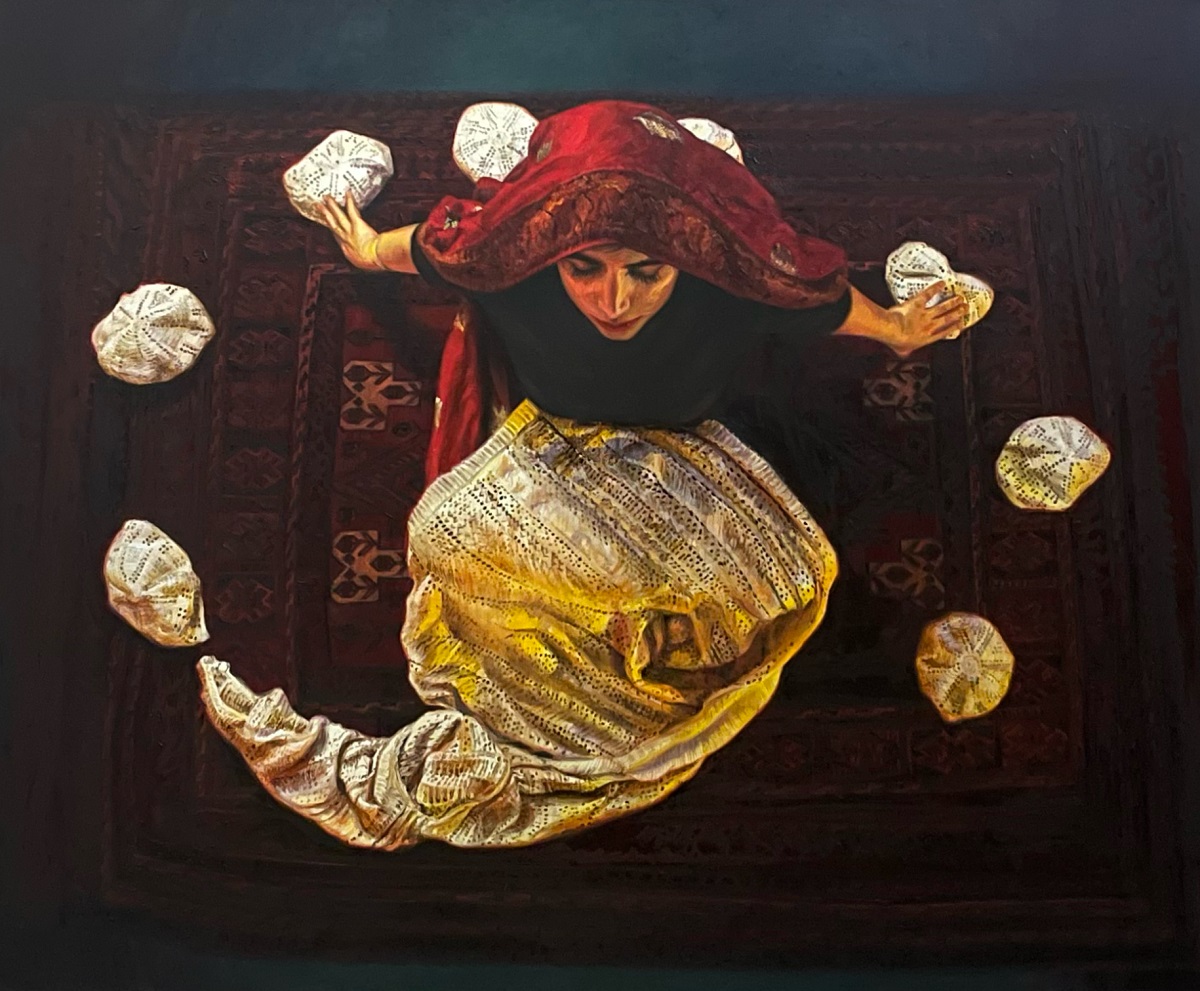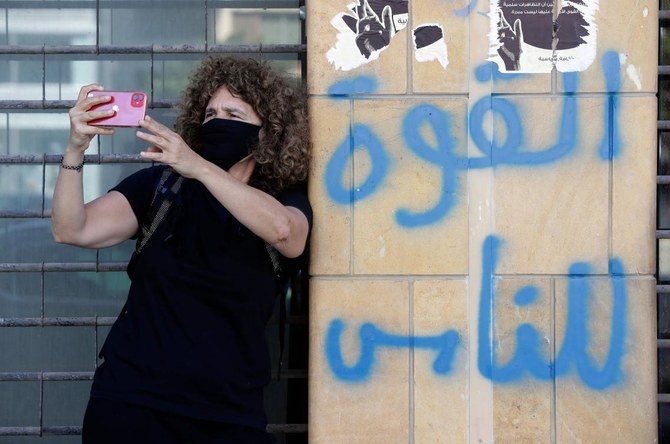NICOSIA: Prize-winning Lebanese documentary filmmaker Carol Mansour fears the world has learnt nothing from the novel coronavirus shock and will go back to square one or worse when normal life returns.
The director, who lost her father living in Canada to the COVID-19 disease, admits “what scares me the most” is that mankind has learned nothing from this crisis.
“Maybe the skies and the rivers have cleared up a bit, but if the coronavirus crisis can’t change us, I don’t know what can,” she told AFP in an interview on Zoom.
“I am very afraid of what will happen after the return to normal” because the crisis “apparently did not teach us anything.”
“I think that we will quickly return to where we were and perhaps worse,” with “three percent of the world population” remaining in charge of the planet.
In her own world, Mansour said the curbs linked to the pandemic have brought out “a personal dimension” in her work and pushed her to look differently at her city, Beirut.
As for her media, the future of cinema remains in suspense, although she has stayed creative in lockdown.
It’s as if “we pressed a stop button” since the virus swept across the globe, said Mansour, who lives in the Lebanese capital.
In collaboration with Daraj.com, an independent media platform, Mansour has produced two short films on the epidemic, including one on her father.
“Every day we hear about... the number of people who have died from coronavirus but I never imagined that my father would be one of those figures,” she says in the film “My Father, Killed by Covid-19.”
In a second video, Mansour focuses on contradictions in “her plans, hopes and concerns” for Beirut in the era of coronavirus.
“Beirut is ugly,” she said, “because of the indiscriminate construction, the proliferation of huge shopping centers and the continued demolition of old buildings.”
But that has been cut short by the epidemic and stay-at-home restrictions.
She explained that she could now walk in usually crowded streets, “alone among cats” because with confinement, Beirut “has become a city of cats.”
“Has Beirut become beautiful or has calm embellished it?” she mused.
The Lebanese director of Palestinian origin has won several international awards, including the 2018 prize for best documentary at the Delhi film festival for “Stitching Palestine.”
Under confinement, Mansour also decided to make another “very personal” film about her mother who fled to Lebanon in 1948 from Jaffa in present-day Israel and died in 2015.
The film addresses her mother’s discussions “on Palestine” while she was suffering from Alzheimer’s.
“I was filming it without intending to collect these videos to make a film,” she said.
Coronavirus has come at a time when we had already grown familiar with “new ways” of seeing and photographing.
“With ‘Stitching Palestine’ we shot segments via Zoom with 350 participants from 20 different countries,” she said.
“We watched the film, then a discussion took place. In this area, there has definitely been some change.”
As for Mansour’s private life, with the coronavirus, “I’ve discovered things about myself... I speak (more) now,” she said with a laugh.
She has also grown to appreciate the merits of a simpler life. “I only yearn for friends and hugs.”
A world redrawn: Lebanon film director fears nothing will change
https://arab.news/rgcrv
A world redrawn: Lebanon film director fears nothing will change

- The director lost her father living in Canada to the COVID-19 disease
- Under confinement, Mansour decided to make a “very personal” film about her mother who fled to Lebanon in 1948
Kawthar Al-Atiyah: ‘My paintings speak first to the body, then to the mind’

- The Saudi artist discusses her creative process and her responsibility to ‘represent Saudi culture’
RIYADH: Contemporary Saudi artist Kawthar Al-Atiyah uses painting, sculpture and immersive material experimentation to create her deeply personal works. And those works focus on one recurring question: What does emotion look like when it becomes physical?
“My practice begins with the body as a site of memory — its weight, its tension, its quiet shifts,” Al-Atiyah tells Arab News. “Emotion is never abstract to me. It lives in texture, in light, in the way material breathes.”
This philosophy shapes the immersive surfaces she creates, which often seem suspended between presence and absence. “There is a moment when the body stops being flesh and becomes presence, something felt rather than seen,” she says. “I try to capture that threshold.”
Al-Atiyah, a graduate of Princess Nourah bint Abdulrahman University, has steadily built an international profile for herself. Her participation in VOLTA Art Fair at Art Basel in Switzerland, MENART Fair in Paris, and exhibitions in the Gulf and Europe have positioned her as a leading Saudi voice in contemporary art.
Showing abroad has shaped her understanding of how audiences engage with vulnerability. “Across countries and cultures, viewers reacted to my work in ways that revealed their own memories,” she says. “It affirmed my belief that the primary language of human beings is emotion. My paintings speak first to the body, then to the mind.”
Al-Atiyah says her creative process begins long before paint touches canvas. Instead of sketching, she constructs physical environments made of materials including camel bone, raw cotton, transparent fabrics, and fragments of carpet.
“When a concept arrives, I build it in real space,” she says. “I sculpt atmosphere, objects, light and emotion before I sculpt paint.
“I layer color the way the body stores experience,” she continues. “Some layers stay buried, others resurface unexpectedly. I stop only when the internal rhythm feels resolved.”
This sensitivity to the unseen has drawn attention from international institutions. Forbes Middle East included her among the 100 Most Influential Women in the Arab World in 2024 and selected several of her pieces for exhibition.
“One of the works was privately owned, yet they insisted on showing it,” she says. “For me, that was a strong sign of trust and recognition. It affirmed my responsibility to represent Saudi culture with honesty and depth.”
Her recent year-long exhibition at Ithra deepened her understanding of how regional audiences interpret her work.

“In the Gulf, people respond strongly to embodied memory,” she says. “They see themselves in the quiet tensions of the piece, perhaps because we share similar cultural rhythms.”
A documentary is now in production exploring her process, offering viewers a rare look into the preparatory world that precedes each canvas.
“People usually see the final work. But the emotional architecture built before the painting is where the story truly begins,” she explains.
Beyond her own practice, Al-Atiyah is committed to art education through her work with Misk Art Institute. “Teaching is a dialogue,” she says. “I do not focus on technique alone. I teach students to develop intuition, to trust their senses, to translate internal experiences into honest visual language.”

She believes that artists should be emotionally aware as well as technically skilled. “I want them to connect deeply with themselves so that what they create resonates beyond personal expression and becomes part of a cultural conversation,” she explains.
In Saudi Arabia’s rapidly growing art scene, Al-Atiyah sees her role as both storyteller and facilitator.
“Art is not decoration, it is a language,” she says. “If my work helps someone remember something they have forgotten or feel something they have buried, then I have done what I set out to do.”











